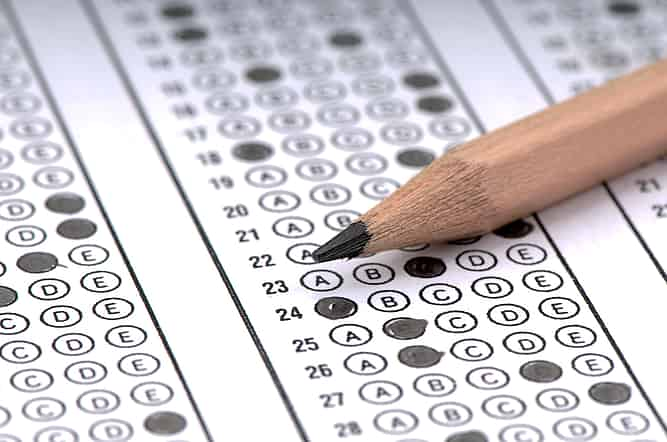Tag: SAT

IvyWise On-Demand: Standardized Testing in a Test-Optional Landscape
Events Standardized Testing in a Test-Optional Landscape DATE AND TIME On Demand Free Watch Now ABOUT THIS EVENT The standardized testing landscape has dramatically transformed over the past few years. While the majority of colleges and universities operated under test-optional or test-blind policies for the 2023-2024 admissions cycle, some colleges, like Dartmouth and Yale, will be returning to requiring test scores for the 2024-2025 admissions cycle. On top of this, the Digital SAT is now being offered both in the U.

Are Test-Optional Policies Here to Stay?
By Carolyn, IvyWise College Admissions Counselor As you might have heard, many colleges across the country have been adopting a test-optional application review process in the wake of the COVID-19 pandemic. If you know you will be submitting applications of your own sometime in the next few years, you might be wondering what exactly 'test-optional' means and whether or not these policies will apply to you. In this article, I will address some of these questions and consider the possible scenarios that you might encounter when your senior year rolls around.

Without Test Scores, How do Colleges Make Decisions?
The process of preparing for, taking, and responding to standardized test scores is a stressful and overwhelming one for students and families, and with the onset of the COVID-19 pandemic, this process has only become more stressful in recent years. One of the ways that colleges have responded to the pandemic's obstacles is to implement test-optional admissions policies to avoid disadvantaging students who have been unable to sit for an ACT or SAT. This was a sudden and drastic shift that left many students and families with questions about how it will impact their own applications.

How to Self-Study for AP Exams
In light of the recent dissolution of the SAT Subject Tests by the College Board, many students in the US and around the world are wondering how now to demonstrate their academic knowledge to universities. While stellar grades, internships, and independent research will always remain a core part of this process, we also know that some colleges still value being able to compare student achievement in standardized test settings. If you’re already enrolled in AP or IB courses at your school, good news!

How to Decide Between the ACT and SAT
If you are planning to apply to a college or university in the US, chances are you’re going to have to take either the ACT or the SAT. At IvyWise we advise students to prep for test – not both. So how do you decide which one is the best fit for you?

How to Read Your SAT Score Report
Your SAT Score Report has a lot of useful information, but understanding what each score means and how they translate into actionable items to aid your college prep can be difficult. Our team of test prep experts has put together the following SAT Score Report guide to help families better understand their students' SAT scores and how they can use these results to make informed decisions on how to proceed with test prep. First, it's important to understand the different scores that you will receive on your Score Report.

Self-Studying: What’s the Benefit and How to Do It
With an increasing number of new technologies and an expanding global population, self-studying is on the rise. Education is no longer confined to just the classroom, and some would argue that the classroom model is outdated and does not meet the intellectual needs of individuals in such an interconnected society. Being an autodidact, or self-teacher, has become increasingly feasible due to MOOCs (massive open online courses), Internet encyclopedias, and more colleges and universities offering courses online.

Spring Standardized Testing: Advice for Sophomores and Juniors
For many high school students, spring semester means standardized test season. Like it or not, these tests are a factor for college admissions at most schools — even if they’re test optional. While a perfect score alone won’t get you into your dream college, it is important to do well on these tests to have the greatest chance of admission.

Starting Second Semester off Right: Tips for a Successful Spring Term
While it can be tempting to simply count down the days until summer break, spring semester is a prime time for high school underclassmen to prepare for the college admissions process, and for college-bound seniors to close out the year on a high note. Believe it or not, seniors, you are not off the hook just yet! Here are some tips for high school students to ensure a productive and successful spring semester.

Gamify Your SAT Prep
Even as the SAT undergoes some significant changes in its switch to a digital format, the underlying reality of taking a major standardized test remains the same — you’ve got to do some prep work! As the hours of grammar drills and math flashcards march on, however, you may find your focus flagging and your energy sagging. What’s a well-meaning student to do when they feel the siren call of the latest Netflix original series tugging their attention away from their notes?

The Benefits of Virtual Tutoring and Test Prep
Online instruction has been growing in popularity over the years because it can connect people from all over the world – and right now it’s necessary as students continue their studies after school closures due to the current coronavirus pandemic. As students connect to instructors online, the demand for virtual tutoring and test prep is growing. But is it effective?

Test Prep 101: Reading Comprehension Questions
In my last article, I discussed a process for how to effectively and efficiently read through the Reading Comprehension passages on the SAT and ACT. Now, we’re going to take a look at how students should approach answering the actual questions within these sections. Always remember this: Reading Comprehension is ultimately an open-book test.

Mastering SAT and ACT Reading Comprehension Passages
Every year, another group of students prepares for a fresh cycle of test prep, each with their own set of strengths and weaknesses. One of the most difficult (and time consuming) parts of the SAT and ACT is getting through the reading comprehension passages efficiently and effectively. I’m here to give you some tips on how to conquer the reading passages on the SAT and ACT.

How to Overcome Difficult SAT and ACT Math Questions
The SAT and ACT Math sections can be intimidating for many students – even those who do very well in their high school mathematics classes. However, the reality is that both the SAT and ACT test math concepts that high school juniors have typically already covered in their high school math courses. So, in some cases, it’s not the material that students struggle with, but how the questions are presented on the exams – which differs greatly from what is traditionally tested on high school math exams.

Test Prep Checklist for Sophomores and Juniors
If you’re not already preparing for the SAT or ACT, now’s the time to get started! The spring semester is a popular testing time, and high school sophomores and juniors need to have a plan to prepare for these important college admission exams. An excellent SAT or ACT score is not a guarantee of admission, but it can be the difference between the “maybe” and the “no” pile when admissions officers are reviewing applications.

Testing Guide for International Students
International students preparing to apply to U.S. universities have a lot to consider, from the holistic admissions process to visa requirements and tuition costs.

Tips to Ace the SAT and ACT: Develop an Effective Test-Taking Strategy
High school students should think about preparing for the SAT or ACT starting their sophomore year. Even as more U.S.

What Families Need to Know About Test-Optional Colleges and Admissions
The test-optional movement has been growing for years now, with approximately 2,000+ colleges and universities in the U.S. adopting some form of a test-optional or test-flexible policy.

The New Digital SAT: What to Expect
By Carl R., IvyWise Master Tutor Now that the new SAT will be making its U.S.


